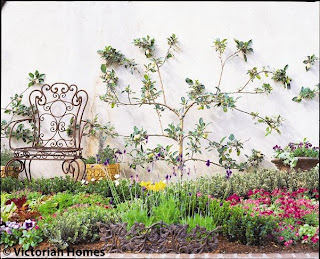While some may wish for a one-level garden, designers like Jill Benshoof and Gary Baker of Plân-aire, a Laguna Beach, California-based landscape architecture and planning firm, are grateful for a many-tiered one. Follow these tips for creating drama in your own yard.
- Designers use changing grades and levels to create intimate, private areas in the garden. (Think about the mood created by a sunken living room and employ the same idea outdoors.)
- Steps and staircases allow for gentle transitions between each distinct space.
- Use each level to showcase a collection of objects, pottery or plants.
- A small bridge or employing a variety of path paving materials—crushed shells, pebbles, wood chips, stepping stones—in different areas will add interest.
- Enclose patios or terraces with vegetation to softly screen the space and create a sense of mystery. Rather than a dense hedge, plant a mixture of evergreen and deciduous shrubs. Light can flow through the openings; niches and gaps offer glimpses of the interior views.
- Landings and thresholds are small but useful “stages” for displaying your favorite plants in containers.
- Provide a place to sit and enjoy the quiet setting. A low chaise, a built-in bench or ledge, or even a cushion placed on the steps invite lingering.
- A free-standing arbor, a gazing ball on a pedestal, and fruit and ornamental trees can serve as focal points and delineate areas with color and height.
- Add sensory details. Make your garden a place for inhaling sweet fragrances, hearing sounds of water and wildlife, touching the appealing textures of leaves, and more. A birdbath or fountain can serve as a focal point as well as invite a variety of songbirds to hear and watch. Cultivate flowering plants that have alternate blooming seasons to provide a constant fragrance. Temporarily place books, pillows, blankets or baskets to invigorate sitting areas.
Photography by Jaimee Itagaki
Styled by Hillary Black and Jacqueline deMontravel









